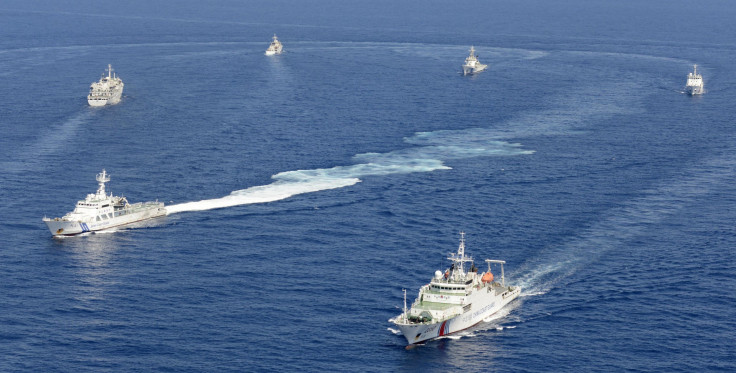China Is Preparing For "Short And Sharp" War With Japan Over Disputed East China Sea Islands: US Officer

[UPDATED: Feb 20, 2014 11:40 am]
China’s military has been beefing up training as the country continues keeping an unwavering stance on various territory disputes with its neighbors. In particular, according to a U.S. naval officer China has been preparing for possible military action over the ongoing dispute with Japan over a small cluster of islands in the East China Sea, and the more recent air-defense zone dispute.
According to a report by the United States Naval Institution, part of China’s Mission Action 2013 exercise, a military drill that includes all branches of the country’s People’s Liberation Army (PLA), included preparation for combat to take over the Senkaku/ Diaoyu Islands, Capt. James Fannell, deputy chief of staff intelligence and information operations for the U.S. Pacific Fleet, said.
“We witnessed the massive amphibious and cross military region enterprise -- Mission Action 2013,” Fannell said during a conference last week in San Diego, Calif. “[We] concluded that the PLA has been given the new task to be able to conduct a short sharp war to destroy Japanese forces in the East China Sea following with what can only be expected a seizure of the Senkakus or even a southern Ryukyu [islands] – as some of their academics say.”
Over the past few years, several geopolitical experts have weighed in on the tension between the two East Asian powers, as both sides continue to add military surveillance and manpower in the disputed areas. Fannell notes that China has reportedly allocated $1.6 million to improve facilities at its outposts on the islands, adding funding for developing ports, air fields, water purification technology and surveillance systems. As China makes moves to upgrade their surveillance in the area, similar actions by opposition is seen as provocation. Additionally, China’s announcement of the establishment of an Air Defense Identification Zone over the waters to its east fueled a debate that included both South Korea and Japan.
With an incredibly rich, tumultuous history in the area, one Australian academic, Hugh White, who is also a former Australian defense official, said it wouldn’t be surprising if the two erupted in war, unless some kind of “creative” diplomatic tactics can create a solution.
In China, predictions see a war breaking out a little further down the line. One particularly pro-government Chinese newspaper, Wenweipo, published a strident article describing “six wars China is sure to fight” over the next 50 years, which estimated a war over the East China Sea islands to begin in 2040.
“As a senior U.S. government official recently stated, there is growing concern that China’s pattern of behavior in the South China Sea reflects an incremental effort by China to assert control of the area contained in the so-called nine-dash line despite the objections of its neighbors, and despite the lack of any explanation or apparent bias under international law,” Fannell also said.
© Copyright IBTimes 2025. All rights reserved.





















